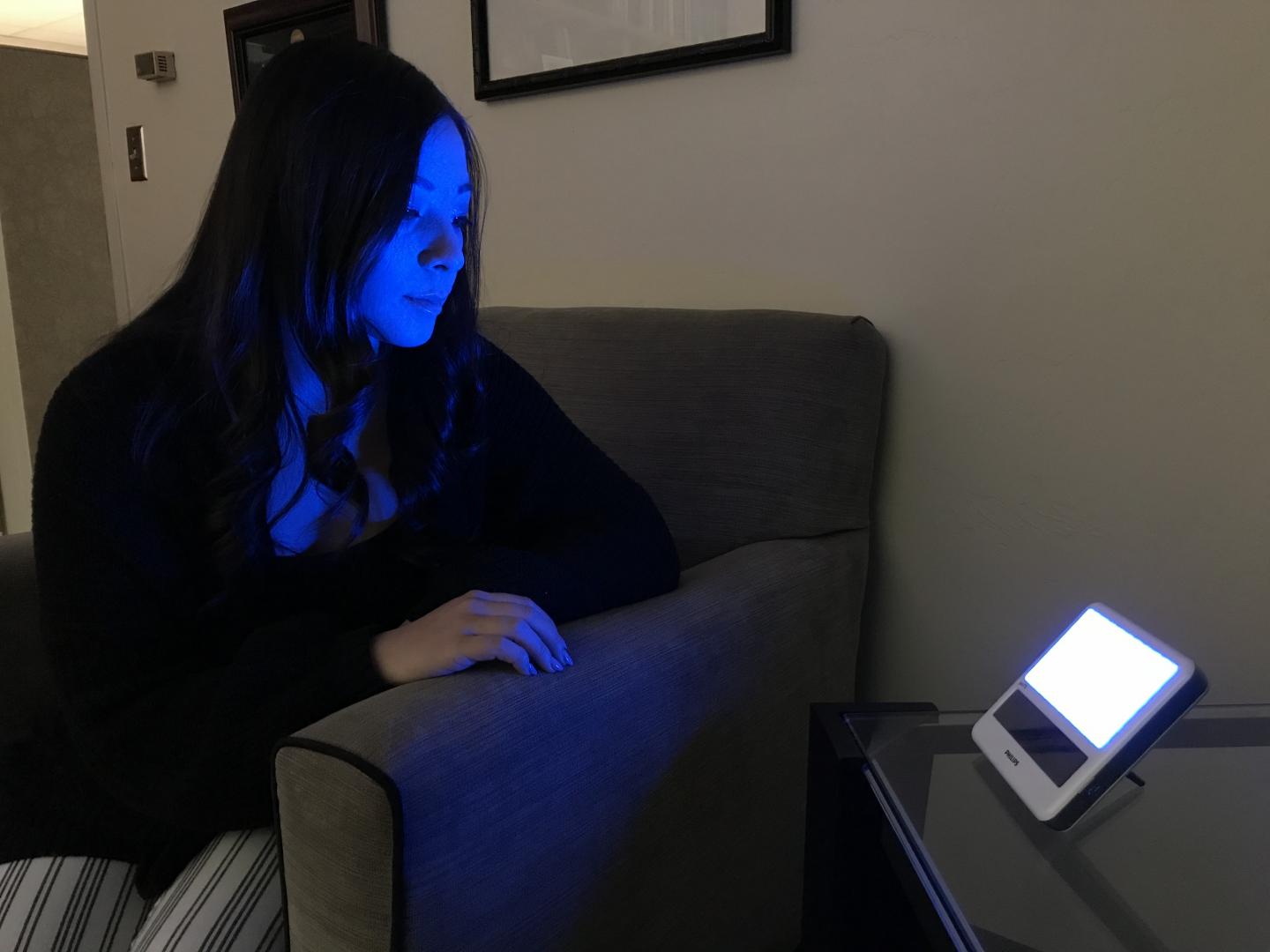 NEW YORK: Early morning blue light exposure therapy can aid the healing process of people impact by mild traumatic brain injury, according to new research.
NEW YORK: Early morning blue light exposure therapy can aid the healing process of people impact by mild traumatic brain injury, according to new research.
“Daily exposure to blue wavelength light each morning helps to re-entrain the circadian rhythm so that people get better, more regular sleep. This is likely true for everybody, but we recently demonstrated it in people recovering from mild traumatic brain injury, or mTBI,” said study lead author William D Scott Killgore from University of Arizona in the US.
“That improvement in sleep was translated into improvements in cognitive function, reduced daytime sleepiness and actual brain repair,” Killgore added.
Mild traumatic brain injuries, or concussions, are often the result of falls, fights, car accidents and sports participation.
Headaches, attention problems and mental fogginess are commonly reported after head injuries and can persist for weeks or months for some people.
According to the study published in the journal Neurobiology of Disease, few effective treatments for mTBI exist.
Recent research has shown that the brain repairs itself during sleep, so the resarch team sought to determine if improved sleep led to a faster recovery.
In a randomised clinical trial, adults with mTBI used a cube-like device that shines bright blue light (with a peak wavelength of 469 nm) at participants from their desk or tables for 30 minutes early each morning for six weeks.
Control groups were exposed to bright amber light.
“Blue light suppresses brain production of a chemical called melatonin,” Killgore said.
“You don’t want melatonin in the morning because it makes you drowsy and prepares the brain to sleep. When you are exposed to blue light in the morning, it shifts your brain’s biological clock so that in the evening, your melatonin will kick in earlier and help you to fall asleep and stay asleep,” Killgore added.
People get the most restorative sleep when it aligns with their natural circadian rhythm of melatonin – the body’s sleep-wake cycle associated with night and day.
“If we can get you sleeping regularly, at the same time each day, that’s much better because the body and the brain can more effectively coordinate all these repair processes,” Killgore added.
As a result of the blue light treatment, participants fell asleep and woke an average of one hour earlier than before the trial and were less sleepy during the daytime.
Participants improved their speed and efficiency in brain processing and showed an increase in volume in the pulvinar nucleus, an area of the brain responsible for visual attention.
Neural connections and communication flow between the pulvinar nucleus and other parts of the brain that drive alertness and cognition were also strengthened, the study said.
“We think we’re facilitating brain healing by promoting better sleep and circadian alignment, and as these systems heal, these brain areas are communicating with each other more effectively. That could be what’s translating into improvements in cognition and less daytime sleepiness,” Killgore said. IANS






